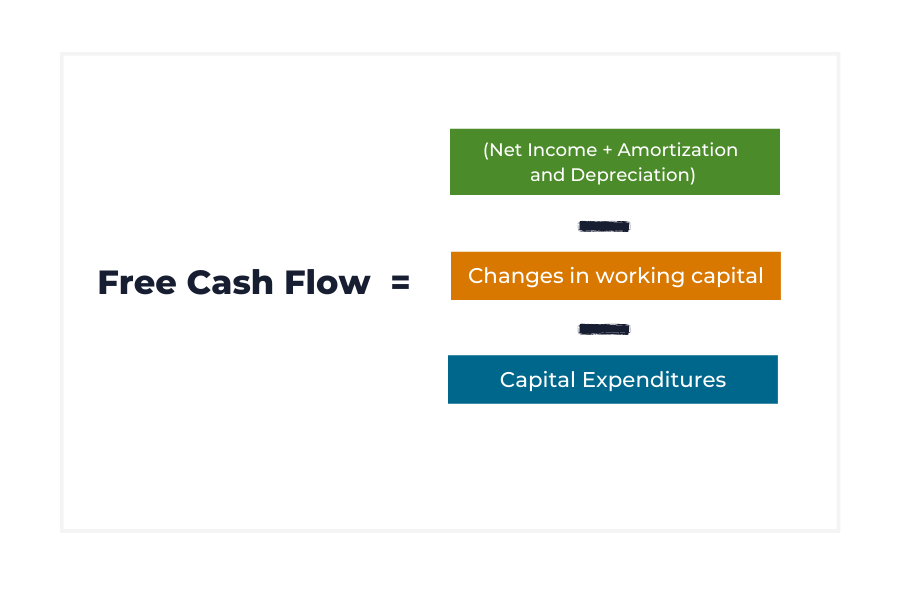Why is Free Cash Flow Important for Scaling Companies?
Simple: Free Cash Flow (FCF) enhances shareholder value. This is an attractive metric for investors compared to price-earnings because, well, you cannot fake it, honey! There are no adjustments made as is sometimes the case with the P-E ratio.
- Business executives and CFOs can use FCF to monitor company health and guide plans for business expansion or reinvestment.
- Creditors and lenders use FCF to ascertain how much debt your company can take on.
- Investors and shareholders use this to understand how much cash your company can generate and how much is available to distribute.
Calculating Your Free Cash Flow from the Cash Flow Statement
The simplified formula for Free Cash Flow is:
Free Cash Flow = Operating Cash Flow −Capital Expenditures
But, there are, in fact, different ways to calculate FCF depending on what your financial statements look like. Here’s how you can calculate your FCF using your P&L and balance sheet:

Start with your net income and add back your amortization and depreciation. Subtract your working capital (to do this, subtract your current liabilities from current assets). Then subtract any capital expenditure. You’ve found your free cash flow!
If a business can pay for operations and growth, this indicates to investors that it has a solid foundation. A large FCF is a good sign that a growing company will also have growing earnings in the near future.
It is worthwhile noting that because FCF is a more volatile financial metric it’s prudent to put it to use it over a number of reporting periods.
Now You Tell Me … My FCF is in the Red!
Don’t freak out just yet, it is still okay to take on losses. A negative FCF is not necessarily a bad thing. It could be that your company’s FCF is in the red because you have made some large investments that could pay out in the future. As long as you can explain your dip in FCF to investors it will not necessarily be a red flag for them.
It is not uncommon to see startups taking losses initially until they increase revenue, and the same goes for a larger company in its later stages that may be pushing to scale through reinvestment. If your reason for a negative FCF is to kick-start long-term revenue growth, your investors will not jump ship.
How can you easily maintain a good FCF?
That being said, companies that are attractive to investors do in fact have a high FCF. As Bloomberg News mentioned in The 7 Essentials of High-Growth Companies, you want to be a “master of exceptional returns. The best-run, high-growth companies are cash-flow positive early and generate more cash as they grow [and] as they fuel growth from their profits.”

How to make your company cash-flow positive?
Be conservative and create a safety cushion with your revenue: Take a small portion, say, 10 percent of your monthly revenue and set it aside. Take the majority, or other 90 percent and sit down with your accountant (or us!) and draft a budget for how that revenue is spent for operational costs. With the 10 percent you are accruing, you have a nice little back-up fund for things like taxes, paying off debt or simply growing it as savings for future reinvestment.
This will undoubtedly put you in good standings with your investors. That is real money and that you cannot fake.
Need help figuring out your free cash flow? Get in touch to book your free consultation today!


